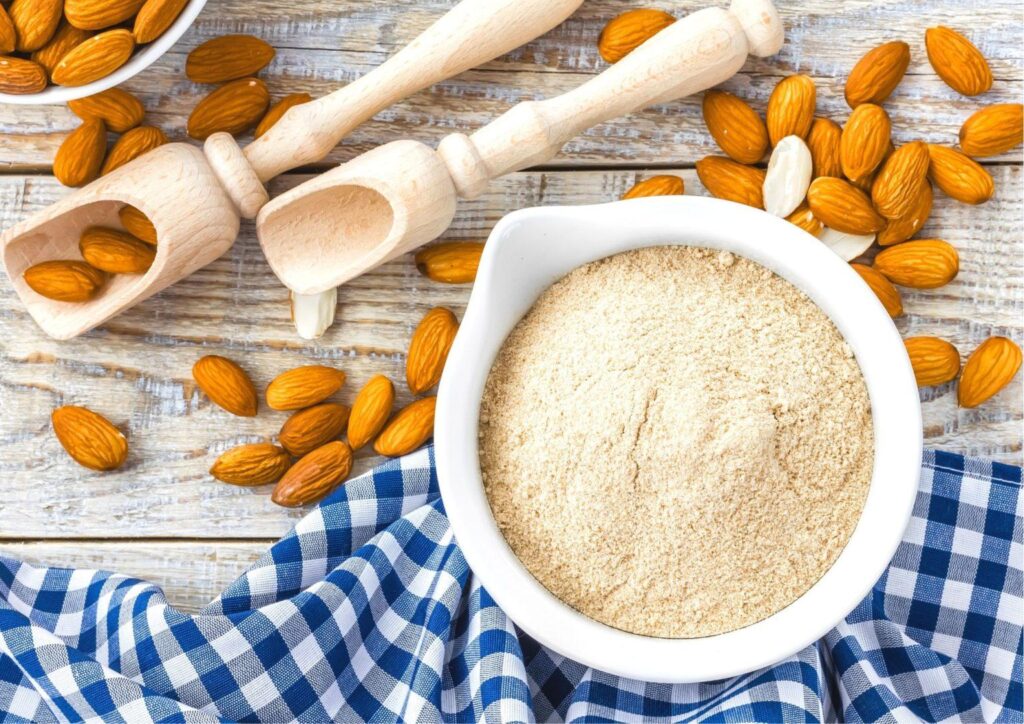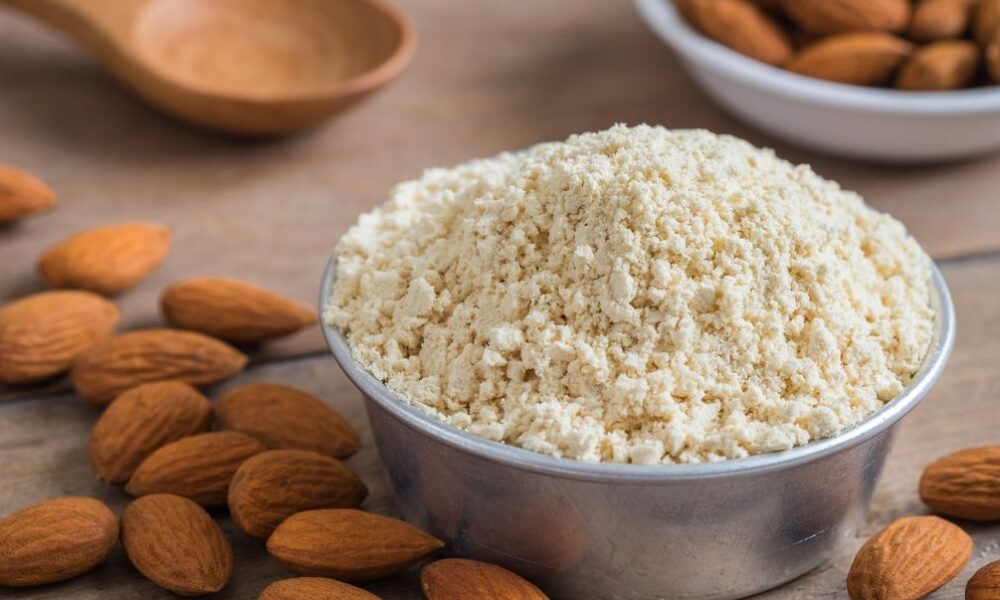In recent years, almond flour has emerged as a superstar in the world of healthy baking and cooking. Whether you’re following a gluten-free diet, looking to reduce carbs, or simply wanting to add more nutrients to your meals, almond flour is a versatile and delicious option.
But what exactly makes almond flour so special, and how can you incorporate it into your diet?
In this blog post, we’ll explore the benefits of almond flour and share creative ways to use it in your everyday cooking.
What is Almond Flour?
Almond flour is made from finely ground blanched almonds (almonds without their skins). It has a light, slightly sweet flavor and a soft, powdery texture, making it an excellent substitute for traditional wheat flour. Almond meal, on the other hand, is made from almonds with their skins intact and has a coarser texture. Both are gluten-free and packed with nutrients, but almond flour is often preferred for baking due to its finer consistency.
Health Benefits of Almond Flour
- Gluten-Free and Grain-Free
Almond flour is naturally gluten-free, making it a safe and delicious option for those with celiac disease or gluten sensitivity. It’s also grain-free, which is perfect for paleo or low-carb diets. - Rich in Healthy Fats
Almonds are a great source of monounsaturated fats, which are heart-healthy and help reduce bad cholesterol (LDL) levels. These fats also keep you feeling full and satisfied. - High in Protein
Almond flour contains more protein than traditional wheat flour, making it a great choice for supporting muscle repair and maintaining energy levels. - Low in Carbs
With fewer carbohydrates than wheat flour, almond flour is ideal for those following low-carb or ketogenic diets. - Packed with Vitamins and Minerals
Almond flour is rich in vitamin E, magnesium, and potassium, which support skin health, bone strength, and overall well-being. - Supports Blood Sugar Control
The low glycemic index of almond flour helps prevent blood sugar spikes, making it a great option for people with diabetes or those looking to stabilize their energy levels.
How to Integrate Almond Flour into Your Diet
Almond flour’s mild, nutty flavor and versatile texture make it easy to incorporate into a variety of dishes. Here are some delicious ways to use it:
1. Baking
Almond flour is a popular choice for gluten-free and low-carb baking. It works well in recipes for:
- Cookies: Swap out wheat flour for almond flour in your favorite cookie recipes.
- Muffins and Cupcakes: Use almond flour to create moist, fluffy baked goods.
- Cakes: Almond flour adds richness and moisture to cakes, making them decadent yet healthy.
- Bread: Try almond flour in gluten-free bread or pancake recipes.
Pro Tip: Almond flour doesn’t rise like wheat flour, so you may need to add a binding agent like eggs or xanthan gum to your recipes.
2. Coating and Breading
Use almond flour as a gluten-free alternative for breading:
- Chicken Tenders: Coat chicken strips in almond flour before baking or frying.
- Fish: Create a crispy crust for fish fillets by dipping them in almond flour.
- Vegetables: Use almond flour to coat zucchini fries or eggplant slices.
3. Thickening Agent
Almond flour can be used to thicken soups, stews, and sauces. Simply whisk it into the liquid until you reach your desired consistency.
4. Breakfast Dishes
Start your day with almond flour-based recipes:
- Pancakes or Waffles: Make fluffy, gluten-free pancakes or waffles using almond flour.
- Granola: Mix almond flour with oats, nuts, and honey for a crunchy homemade granola.
- Smoothie Booster: Add a tablespoon of almond flour to your smoothies for extra protein and fiber.
5. Desserts
Almond flour is a star ingredient in many healthy desserts:
- Energy Balls: Combine almond flour with dates, nuts, and cocoa powder for a quick snack.
- Pie Crusts: Use almond flour to make a gluten-free crust for pies or tarts.
- Brownies: Create fudgy, low-carb brownies with almond flour as the base.
Tips for Cooking and Baking with Almond Flour
- Adjust Liquid Ratios: Almond flour absorbs more moisture than wheat flour, so you may need to increase the liquid in your recipes.
- Combine with Other Flours: For a lighter texture, mix almond flour with coconut flour or tapioca flour.
- Store Properly: Keep almond flour in an airtight container in the fridge or freezer to prevent it from going rancid.
Potential Drawbacks of Almond Flour
While almond flour is incredibly nutritious, there are a few things to keep in mind:
- Calorie-Dense: Almond flour is high in calories, so portion control is key if you’re watching your calorie intake.
- Nut Allergies: If you have a tree nut allergy, almond flour is not a safe option.
- Cost: Almond flour can be more expensive than traditional wheat flour, but its nutritional benefits often justify the price.

Almond flour is a game-changer for anyone looking to embrace a healthier, gluten-free lifestyle without sacrificing flavor or texture. Its impressive nutrient profile, versatility, and delicious taste make it a must-have in your pantry. Whether you’re baking, cooking, or experimenting with new recipes, almond flour is a fantastic way to add a nutritious twist to your meals.
So, why not give almond flour a try? Whip up a batch of almond flour pancakes, bake some gluten-free cookies, or coat your favorite protein in this nutty, nutrient-packed flour. Your taste buds—and your body—will thank you!
Have you tried cooking or baking with almond flour?
Share your favorite recipes and tips in the comments below!🍪🥞

